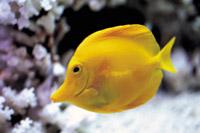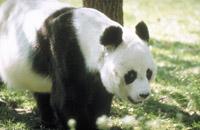Kitty: fleeing the ghost of disappearance

Crowded zoos on Sunday afternoons, dolphin shows filled with bustling children, a botanical garden designed as a labyrinth... They are not mere places of leisure for people who have no other task. They are the last choice of some species in danger of extinction, that is, the possibility of getting out of the overwhelming pressure of the environment and starting again.
Human action has led to various endangered species, that is, to the turbulence of extinction. The only way to deal with this is through the creation of stable captive populations, the conservation of individuals in man-controlled and controlled means. This strategy is called out-of-place or ex situ conservation. When species cannot be preserved in their natural spaces or we have time against them, the only option is conservation out of place. However, do not forget that ex situ and local conservation are complementary
.Out-of-place conservation
Ex situ conservation consists in the maintenance of a species outside its habitat, in conditions imposed by humans or in a non-natural environment. It can be an effective initiative because it allows us to act quickly and accurately. However, this is not a long-term solution, as the main objective should be the return of species to their environment. In fact, species interaction is also a value to be conserved.
Ex situ techniques, in addition to providing information on population biology and reproductive biology in the field of conservation, offer the possibility of improving surveillance and management techniques, strengthening small wild populations or introducing new populations. Out-of-place conservation can be carried out in an artificial space created by man (zoos for animals and botanical gardens and seedbanks for plants) or in controlled natural areas that are alien to the species.
Artificial spaces
Zoos and aquariums
Traditionally the zoos have been exhibitors specialized in the conservation of large, colorful and beautiful mammals, and the aquariums are rooms full of fish tanks that showed exotic fish of striking colors. They are the ones that generate the most interest in society. Consequently, it seems that the largest animals predominate in the fauna, which is a wrong vision, besides not knowing most of the diversity of the world, there is a disinterest in its conservation.

Fortunately, zoo policy is gradually changing: most are no longer mere animal exhibitors. The research focuses on areas such as knowledge of species biology or improving animal living conditions to make them as similar as possible to wildlife. In addition to the role of zoos and aquariums in conservation, we must mention and care for what they have in the educational field. In addition, training programmes for staff are increasingly numerous. In any case, the most remarkable contribution of zoos to conservation is the achievement of stable captive populations. In this way, we could strengthen the populations potentially threatened in a wild way or restore the disappeared, for which we would start from individuals raised in captivity and we would not have to take individuals of the nature to supply the parks. In addition, what we learned from species that we have had captivity can be useful for the management of wild populations.
Botanical gardens

The 1,500 currently existing botanical gardens retain 15% of the world's plant species, some 35,000. Many other species are also collected in greenhouses and private gardens. Plants can grow more easily than captive animals. In addition, obtaining individuals is very simple, being able to sow seeds or cultivate benefits, rhizomes or tissues. However, there are problems: the main one is its location. As the greatest plant diversity is found in the tropics, there are few botanical gardens present in these latitudes. Although, after significant economic costs in temperate latitudes, the growth of tropical plants (which must artificially maintain their living conditions) is possible, the implementation of botanical gardens in tropical areas should be a priority for the international community to be able to conserve their wealth more economically.
Seed banks
Seed banks have a guarantee function for the conservation of species. Although the aim of seed banks throughout history was to maintain the genetic variability of agricultural seeds, they are now the refuge of global plant diversity. The seeds of most plants remain for a long time in cold and dry conditions, and when necessary, it is easy to cool them. Seed banks also have their limits. Certain seeds, although preserved in suitable conditions, lose the ability to germinate over time, so occasionally the seeds of the bank must be renewed. In addition, there are several species (15% of the world's flora) that cannot be preserved in the long term, as they do not have a sleeping state or are unable to withstand the cold.
Controlled natural areas

Due to their needs, some species do not form populations in artificial areas, since their cost is very high or it is not possible.
For large marine mammals, for example, the main problem of ex situ population formation is the high volume of water needed. Although a pool is sufficient for a few individuals, to form a fertile population it is necessary to seek another solution, establish protected water areas. In the Yangtze River in China, several researchers work in this way with the cantilever dolphin (see chart below): they have left their environment and have managed to perpetuate the fertile colonies in the protected lakes, with the intention of re-entering their original habitat.
Barriers to out-of-place conservation
Ex situ conservation does not aim to show relics. Being an instrument of conservation of nature, the objective must be to recover wild populations from the populations cultivated in this way. Ultimately, out-of-place conservation is not an objective in itself, but an emergency solution, and this possible solution has several limitations.
In general, although most vertebrate species can grow and proliferate under lock, there are exceptions. To solve these problems, techniques have been developed such as artificial fertilization, embryo transfer (implantation of a fertilized egg in the uterus of the female of a relative species), artificial incubation and the technique of the surrogate mother (breeding of offspring by the "adoptive parents" of a relative species). In any case, despite the efforts made by scientists, in some cases it is impossible to maintain stable populations in the zoos, the case of the panda bear is a clear example, although after an adequate selection of compatible reproductive members and the tuning of fertilization techniques it seems that things are improving. On other occasions, as in the case of whales, establishing living conditions that require their size is very expensive.
As for the conservation of invertebrates, many species have already been reproduced in captivity. However, the vital cycles of some invertebrates are very complex, as the diet and the medium they demand change.
At present, special attention is paid to the genetic health of populations. In fact, blood descendants have a high mortality rate.
To ensure genetic health it would be necessary to maintain relatively large populations and in practice this is not possible. Therefore, the genetic lineage of individuals who are taken to zoos is analyzed in detail and the association of individuals with genetic kinship is avoided.

However, in the long term, the lines of individuals better adapted to captivity by natural selection would be preferred, and returning to their original life zones would have reduced their survival capacity. We also have political management problems: To carry out initiatives such as “ex situ” is necessary a constant source of money and a policy of institutional monitoring; if any of them is suspended, species can be lost. In addition, if population development efforts were to take place in one area, if there was a catastrophe, the population would disappear.
When establishing new populations, we must take into account the behavior of species. Different mammals and birds show social behaviors and learn from their parents the interaction with the environment: how to get fodder, migratory criteria, etc. Therefore, it is necessary to train for what you will find in wildlife before liberating individuals from species with social behavior, for example, in wild individuals. It is also very important to minimize the relationship with the human being. Individuals who have had contact with caregivers may consider man a "friend" when in reality it is easier to be a rival.
Out-of-place conservation applications
Reintroduction of species
If a species has disappeared in an area of the range, we can restore it. The new population may consist of individuals grown ex situ or wild. However, if the factors that led to the extinction of the species have not disappeared, it makes no sense to try to establish a new population. We must also take into account the opinion of society, which will greatly condition the success of the viability of new settled populations. In many cases it would be necessary to implement educational programs. Nor would it be necessary to address the ways to deal with the economic effects that the reintroduced species could cause on the human population of the area, as is the case of the actions carried out for the reintroduction of the Slovenian bear in the Pyrenees.
Introduction of species
It seeks the implantation of a species in a historically different environment. On many occasions, a species cannot be reintroduced into its home environment, since the agent causing the disappearance of the population is still present. The only way to preserve the species is to release it in a medium that best fits it.

In any case, it should be noted that the species is completely new in the area and will cause a profound change in the area. Before proceeding to release it must be checked accurately if the introduction can cause damage to any of the threatened species. In Euskal Herria we have a clear example of American crab. This exotic species, in addition to representing the crab of the autochthonous races, has reduced the populations of other species by its aggressiveness as predators. Aita David's Oreina also offers a great access opportunity.
Strengthening the population
Another notable application of out-of-place conservation is the individualized increase of small populations. The increase of individuals grown ex situ in small populations, in addition to increasing their genetic variability, allows to balance the proportions between males and breeding females to improve their reproductive efficiency. In the Urdaibai region, for example, annual roe deer are released to reinforce the reintroduced roe deer population.
Towards the future...
As the human population grows, our needs choke the future of many species that share the planet with us. Although we are taking steps in the field of conservation, although we are continuously researching new techniques and initiatives, if society does not have true awareness, all efforts will be sterile. The viability of any population established by human beings is not guaranteed only by liberation. Thorough monitoring is necessary to ensure the consolidation of population dynamics and their capacity for exploitation and reproduction.
XXI. about to enter the 20th century, nature conservation should not be just a concern of scientists. Therefore, the role of ex situ conservation in education must be strongly highlighted. Zoos, aquariums and botanical gardens should provide information on endangered species and the factors that have led to ruin. Only by knowing the reality of our environment can its transformation be addressed. Future generations should be satisfied with the CD display of various species that can currently be seen in zoos and botanical gardens. It is in the hands of society that the species catalogue of this CD of the future is shorter than current forecasts indicate.





